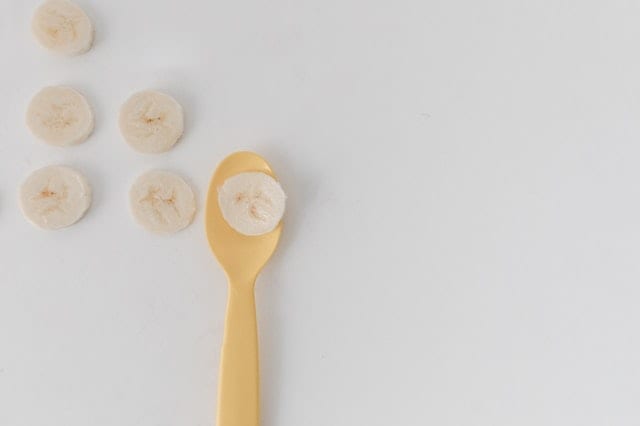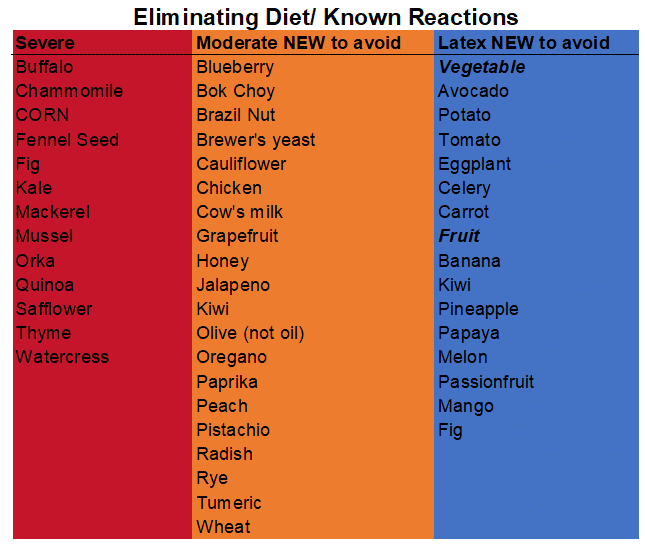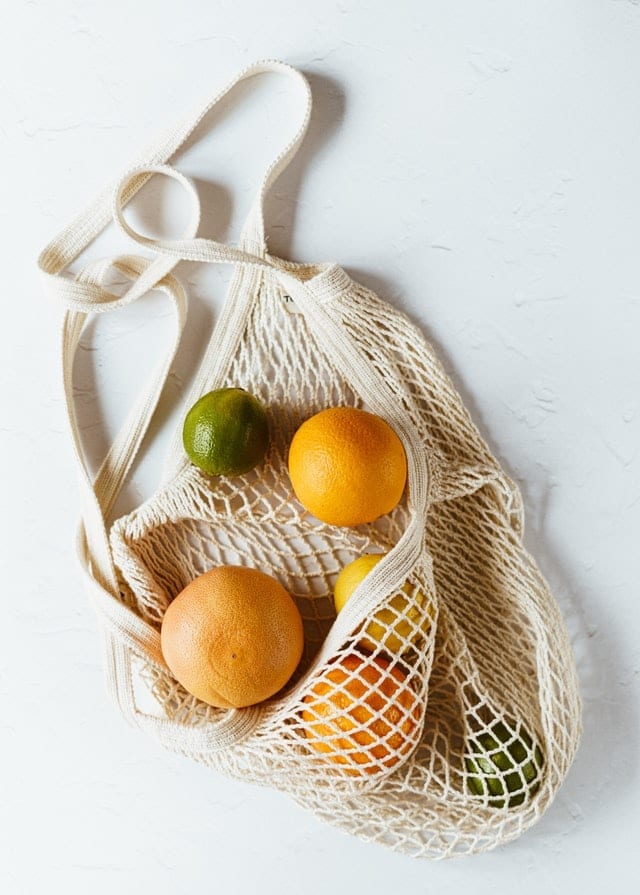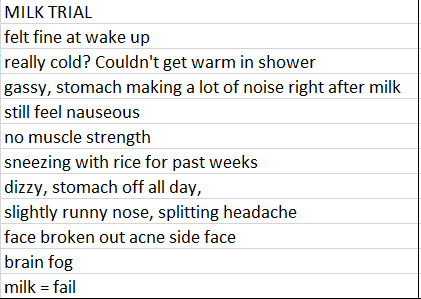Elimination diets are great ways to figure out if there’s a certain food causing you problems, whether digestive, acne, or even back aches. This is a cheap way to figure out what’s going on! Here’s how to do an elimination diet with some tips on how to make it manageable.
I want to give a few tips and tricks I’ve learned through my elimination diet to help anyone who might be trying one out for the first time. These are all suggestions I have since I’ve done a few elimination diets! I was having a ton of stomach issues. And they weren’t going away.
I don’t agree with some of the elimination diets out there, the ones that say to eliminate “these specific items.” Because those food items might not be the ones that are causing your issues. Nothing is one size fits all, and that includes elimination diets. They can be a great place to start if you’re lost, but I wouldn’t follow any exactly.
This article will begin with just the simple tips for how to do an elimination diet, and read further for the full reasons why I suggest these!

Tips on How To Do An Elimination Diet Successfully:
Eliminate these Food Items:

- Items you eat on a regular basis and more often than once a day (i.e. wheat, corn, soy, dairy…)
- Foods that your have family history of problems with
- Anything you might already be suspicious about
- Try to cut out alcohol and caffeine, and lower refined sugar intake
What not to avoid: don’t cut out an entire food group (like carbs), because that could have adverse reactions on your body
Before starting the elimination diet:
- Make a list of the foods want to eliminate
- Decide how long you want to avoid foods before trialing an eliminated food
- Prepare a meal plan for a week – breakfast, lunch dinner

- Also, plan snacks for between meals
- Go grocery shopping and buy ingredients for at least the first week
- Try to not buy “new” items – try to buy ingredients you normally eat, so as to not add anything new to your diet
- Have a plan for if you want something that you’ve eliminated
- Prepare a food journal, whether on your phone, paper, or computer
- Talk to your doctor before beginning (not a requirement, but a suggestion)
The first week:
- Prepare to have withdrawal affects from eliminating some of your normal ingredients!!!!
- You might be tempted to break the elimination diet, but try to stick with it
- Make sure to write everything down, including symptoms
- Try to prepare food an hour or so before you get hungry
- Be ready for your body to feel different, but also be ready for it to take time to feel any changes
Trialing one of the eliminated foods:
- Trial at the beginning of the day, before consuming anything else
- If you’re worried it’s an allergy and not sensitivity, start by just touching the food to your lips for a few seconds and then waiting a few days to note reactions, or
- Try placing a small amount in your mouth, and holding it in there for about 30 seconds. Spit out food. Wait for a few days, or

- Eat a small amount (1 tbsp or less) and wait a few days to see if there’s a reaction.
- During this time, do not introduce other items into your daily meals, so as to not be uncertain about reactions
- Keep track in your food journal for reactions/changes to your body
- A few days later if no reaction: try a larger amount and see if there’s a reaction
- Repeat over a few weeks with the other eliminated foods
- If you do notice a reaction, that means it’s a food to avoid for a while
If, after a few weeks of the elimination diet you don’t feel any better:
- It means one of the foods you didn’t eliminate could be the cause
- Make a list of every single ingredient you’ve been eating (check with your food journal)
- Look at things you aren’t necessarily eating too (toothpaste, supplements, juice, lotion)
- Try eliminating anything else you’ve noted
- Talk to someone about it – a friend or professional, see if they have any ideas
My Explanation
What to avoid

Because I had the ALCAT done a few years ago, I decided to follow more strictly the results that I got from that. Instead of just following the list of items in red, I decided to do both the severe and moderate lists as a starting point for my elimination diet.
Along with those long lists, I also decided to avoid food items that are in the latex family. I did this because one day at work we put out latex Halloween masks, and I had a hard time breathing around them. I wasn’t sure if they were covered in cornstarch and I was having my first airborne reaction or if I had an undiscovered latex allergy.
Some of the foods I decided to avoid that had been staples include: cauliflower, cow’s milk, honey, wheat, and potatoes. There was a list of 40+ items I was intending to avoid. I also decided to be more strict with corn again. Inadvertently I also quit caffeine and alcohol at the same time. I was normally drinking about 2 cups of caffeine a day, so that was painful. Alcohol wasn’t bad, as I was already only drinking a glass a week, if that.
Dairy was on my list already, but another reason I decided to eliminate it is because there’s a history on my mom’s side (all of her sisters and mom) have a hard time digesting it.
Before starting the elimination diet:

I decided that I would take 3 weeks from starting my elimination diet to trial something new. This seemed like a long enough time for me to have everything clear out of my system at least enough to test if it would create a reaction when I tried it.
I typically already make a weekly grocery list by planning dinners, so I just added breakfast, lunch and snacks to this list. Then I was never struggling to figure out what to eat on an empty stomach. This was a big problem when I originally cut out corn, so I wanted to be more prepared this time instead of just cutting it out with no plan and no groceries purchased.
And when going grocery shopping, try to not buy pre-made “healthy” items. Such as dairy free ice cream. They might have a bunch of extra ingredients that could do more harm than good to this elimination diet, because instead of just eliminating foods, you’re actually adding a bunch in.
Also, writing down what you’re eating is important. This way you can see what’s going on and hopefully correlate it to what you’ve been eating. It’s why I suggest a food journal, and starting to write what you eat before even starting the elimination, partly to know what you currently consume, and also to get used to the rhythm of writing down your meals.
I did not talk to a doctor or dietitian before starting this elimination diet, but it can be a good idea. To make sure it’s a good idea, or to have suggestions on how to stay safe with it. I have a degree in nutrition, so I wasn’t worried about becoming deficient in a nutrient because I planned for a healthy, complete diet. But if you don’t have that knowledge, a dietitian can be helpful, or do the research before you start.
The first week:
Something I didn’t know that I wish I did, is that there can, and probably will be withdrawal affects from cutting out some food items.
I say this now, because it’s so important to know. In all of my elimination diet research, I didn’t know to expect it either. One morning (not while I was working, thankfully), I started feeling really faint and lightheaded. Bending over, I felt dizzy and nauseous. In general, I felt like I had an awful hangover and couldn’t remember words. Eventually, I just had to lie down on the couch and let it pass.
The withdrawal effects occur because your body is used to getting nutrients from certain foods (think like forgetting to have your morning cup of coffee and getting a headache and feeling tired). My body was used to getting a lot of energy from milk and wheat products, and getting a boost from caffeine. Eliminating all of these items at once takes a toll on the body. If you want to read more about it, I like this article about sugar withdrawal.
Also, make sure you keep writing down your food and all of your symptoms/reactions to anything. It’s important to keep track of your diet during this period. You might notice changes right away, or might not notice any changes. For me, my stomach didn’t get any better, but my acne cleared up for the first time ever.
Trialing the eliminated foods:

Start with one item at a time, and make sure to trial in small doses. This is one other aspect I really messed up with. On the day of my first trial, I decided I would try a glass of milk. And ended up drinking about a cup of milk. This was a huge mistake, as I quickly found out. I never expected to have an issue with milk, as I drank it all the time. Here’s the notes from my food journal for the entirety of that day:
The lesson from this: Start small with your trials. Start with a tablespoon or less of the food you’re trialing and give that a few days to see what happens.
If, after a few weeks you don’t feel better:
This could be because you’ve missed what is actually causing the problem. My acne had cleared up, but my stomach had actually gotten worse. And I couldn’t figure out why initially. I actually figured out eventually it was my toothpaste causing some of the issues. I was having stomach issues in the mornings, before I even ate anything, or the foods I was eating had no similarities day to day. So I figured it out by my careful tracking in my food journal. Once I switched, things got slightly better.
I ended up cutting out a lot more foods than I initially intended, and at the same time was able to reintroduce some of my eliminated foods from the list, like most of the latex items.
If you’re having a lot of problems and really can’t figure it out, talk to someone. Get some help. Either ask a friend or ask a professional. I ended up not being able to figure out a lot of food problems, and started going to acupuncture, where the woman did muscle testing to more quickly figure out what my food sensitivities are (more will be written about this soon).
Well, I hope all of this information isn’t too overwhelming and helps you have a successful elimination diet, leading to a healthier body!
-Ashley

